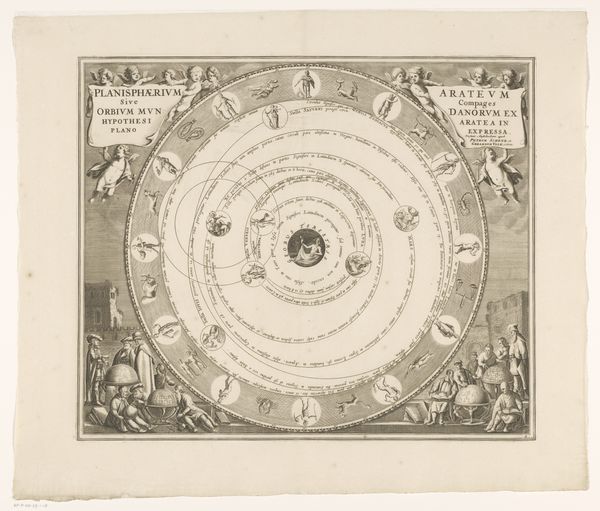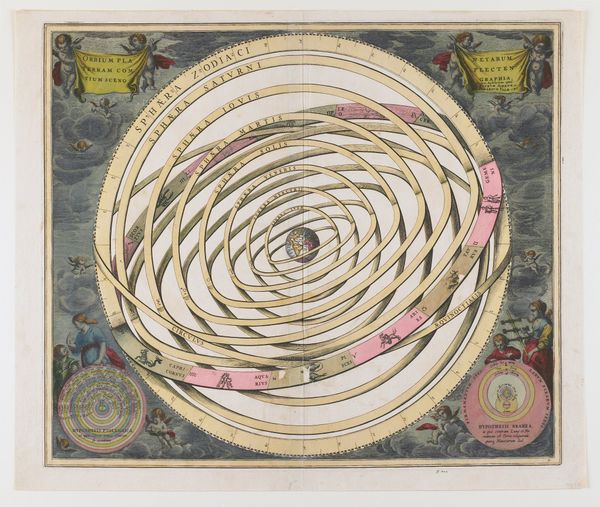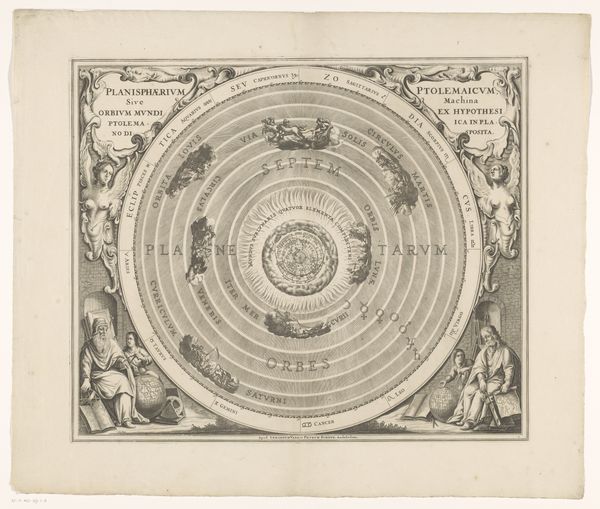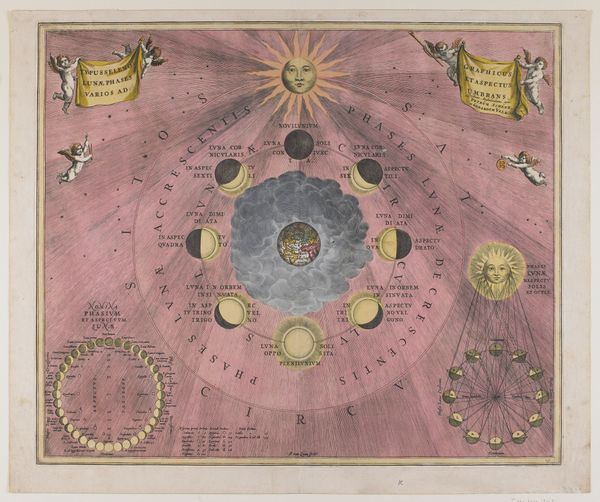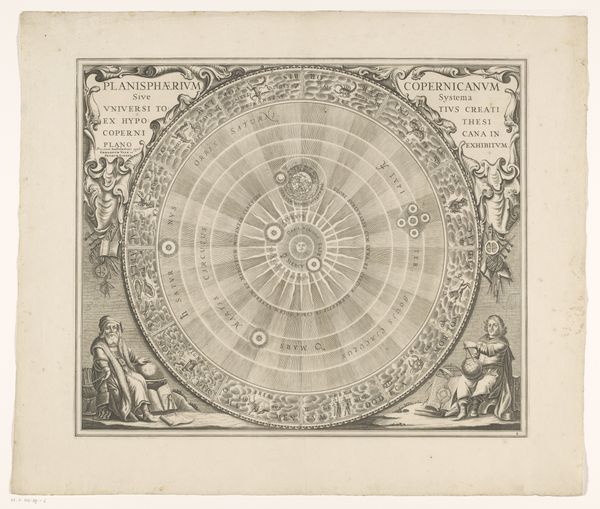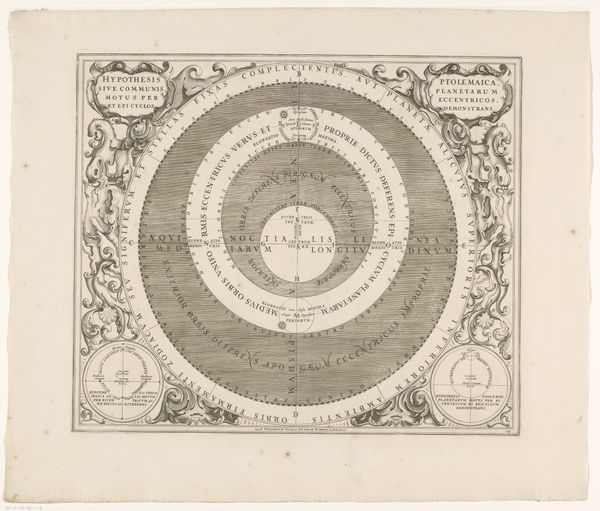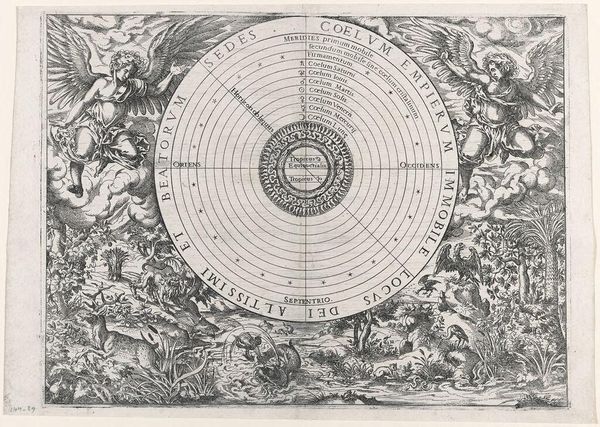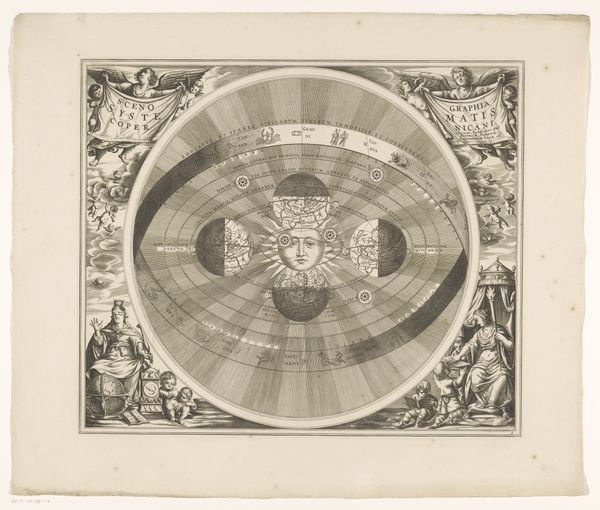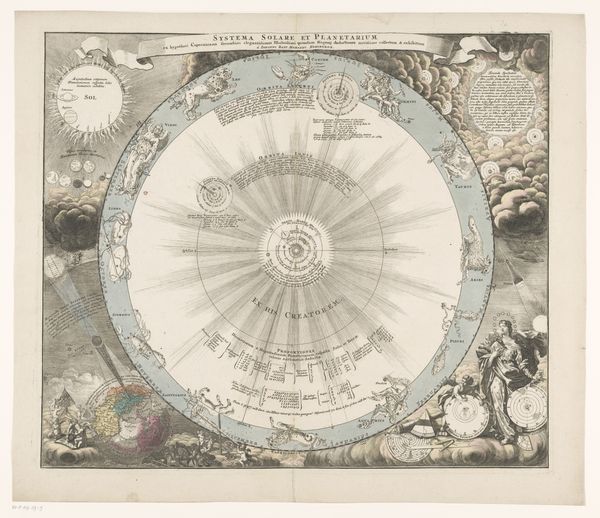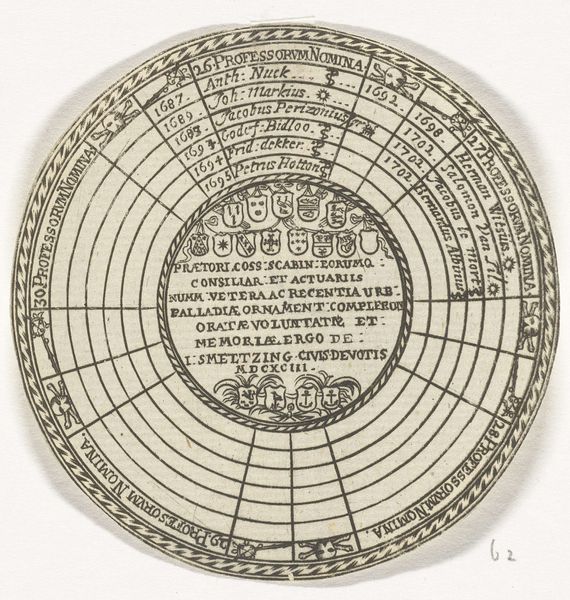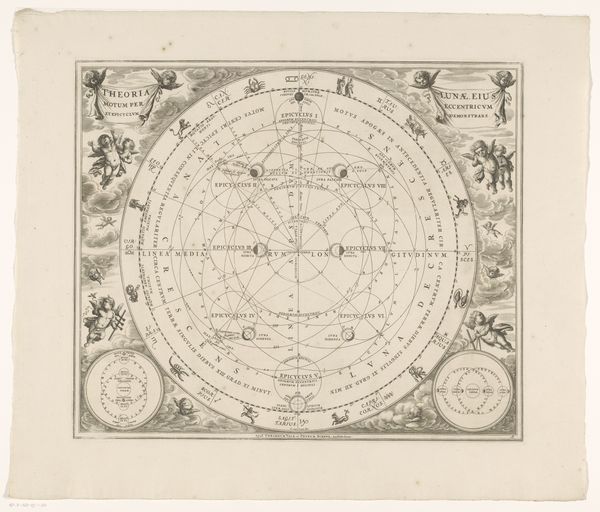
print, engraving
#
water colours
#
allegory
#
baroque
# print
#
geometric
#
history-painting
#
engraving
Dimensions: 17 1/4 x 20 5/8 in. (43.82 x 52.39 cm) (plate)
Copyright: Public Domain
Andreas Cellarius created "The Planisphere of Ptolemy" in the 17th century, a time when Europe was deeply invested in understanding the cosmos through a blend of science, philosophy, and religion. This planisphere visualizes the Ptolemaic system, an earth-centered model of the universe, reflecting a worldview where humanity and its home are at the center of creation. Consider how this contrasts with later, heliocentric models. The map isn't merely a scientific diagram, it is a cultural artifact, revealing the period's understanding of humanity's place in the universe. The figures of astronomers are included around the borders, symbolizing the transmission of knowledge and the intellectual labor involved in mapping the heavens. The artwork uses gendered and classical allegories to frame scientific inquiry. Note the celestial figures populating the rings which demonstrates the intertwining of mythology and scientific observation. This planisphere invites us to reflect on how knowledge is constructed, visualized, and culturally embedded. How does it feel to see the world represented with Earth at its center?
Comments
minneapolisinstituteofart almost 2 years ago
⋮
Ptolemy's towering treatise the Almagest, dating from about 150 a.d., was the authoritative textbook on astronomy for nearly 1,500 years. Arabic scholars and then mediaeval monks copied the Latin text in illuminated manuscripts before the age of print. Here the cartographer Andreas Cellarius described Ptolemy's geocentric conception of the universe. In the lower margins, the artist included imagined portraits of Ptolemy (lower right), and Aristotle (lower left), the chief source of Ptolemy's ideas.
Join the conversation
Join millions of artists and users on Artera today and experience the ultimate creative platform.
